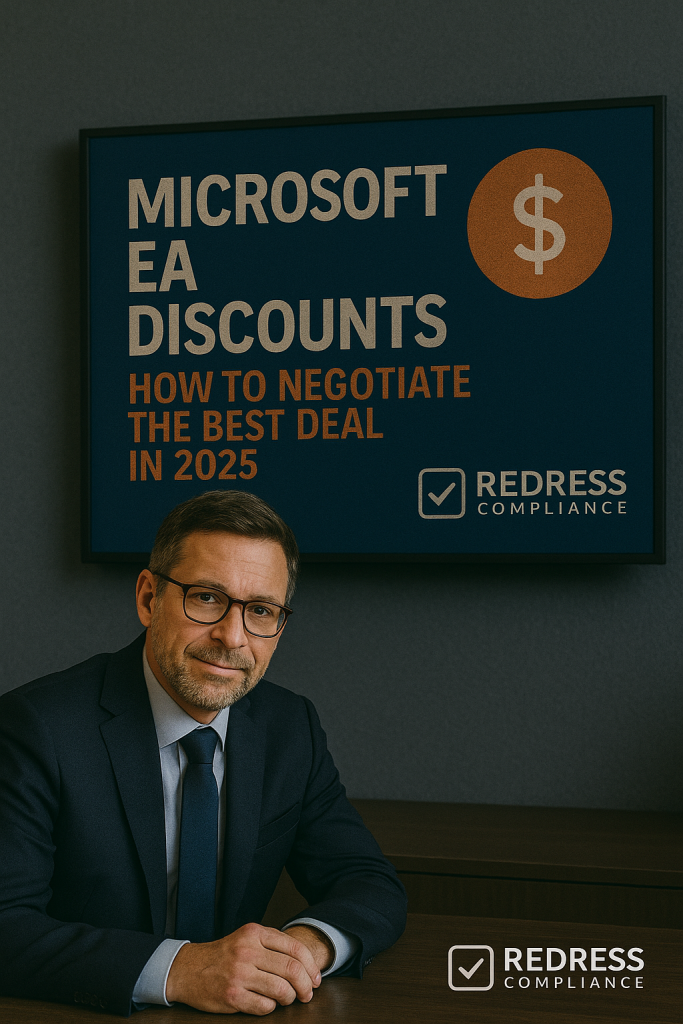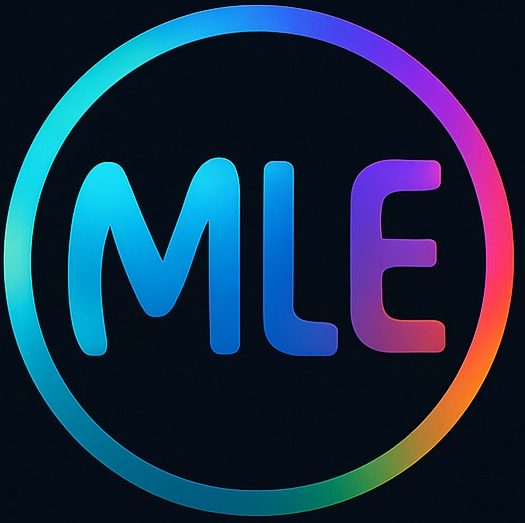Microsoft EA Discounts – How to Negotiate the Best Deal

Introduction – Why Microsoft EA Discounts Matter in 2025
Microsoft’s pricing shifts in 2025 require close attention from CIOs and IT procurement teams. Rising list prices and the end of legacy volume discounts mean you can’t count on any automatic savings.
In fact, large enterprises renewing now could see 10% or more in added costs if they don’t negotiate new concessions. Stronger EA pricing negotiation is critical to protect budgets, as every percentage point counts. Read our Microsoft Enterprise Agreement Negotiation Guide.
This year also brings new challenges. AI-powered add-ons like Microsoft 365 Copilot (around $30 per user/month) come with hefty price tags, and cloud consumption across Azure and other services continues to climb.
Without negotiated Microsoft EA renewal discounts, these new costs can easily balloon your IT spend.
Simply put, Microsoft won’t hand out discounts in 2025 – you need to negotiate for them. The following strategies will help you secure the most value and savings in your next Enterprise Agreement.
Know Your Baseline – Starting Point for EA Pricing Negotiation
Before you start negotiating, make sure you understand your current costs and terms. Use this as a foundation to evaluate Microsoft’s offers.
- Compare current vs. list pricing: Begin by auditing your existing licensing costs. What are you paying now for each product versus Microsoft’s official list price? For renewals, identify your current EA discount levels (e.g., 10% or 15% off certain licenses). This baseline shows how far the new quote is from what you pay today.
- Get a detailed quote for new deals: If you’re negotiating a new Enterprise Agreement, insist on a transparent, line-item quote from Microsoft or your reseller. Ensure it displays the list price and any initial discounts for each component. This first quote is your baseline “floor” price.
- Treat the first offer as a floor: Microsoft’s initial proposal is just a starting point, not the final deal. EA pricing negotiation is expected, so never accept the first offer. Assume there’s room to push lower. Vendors often start high, knowing you’ll negotiate down, so view the opening quote as the worst-case price.
Use our, Microsoft EA Negotiation Checklist: Plan Your Enterprise Agreement Deal.
Setting Targets – What Microsoft EA Discount 2025 Looks Like
Knowing what a good deal looks like is essential. Set clear goals for the discounts you need so you can measure any offer against them.
- Aim for double-digit savings: In 2025, well-negotiated enterprise deals often achieve 15–25% off list prices. Set a concrete goal (for example, “at least 20% off overall”) before you begin talks. Having a target prevents you from settling for a mediocre deal.
- Adjust expectations by product: Discount potential varies by product family. You might secure around 15–20% off Microsoft 365 or Windows 365 licenses, but only 5–10% off Azure consumption without a large commitment. Dynamics 365 and Power Platform could fall somewhere in between. Know where you have more wiggle room and prioritize those areas.
- Establish walk-away thresholds: Decide your “good, better, best” outcomes and a firm walk-away point. For instance, treat 15% as the minimum acceptable discount and 25% as your stretch goal. Ensure these targets are clearly defined internally so the team remains aligned if negotiations become tough.
Bundling Strategy – Negotiate EA Discount by Expanding Scope
Larger deals can lead to larger discounts – if you bundle wisely.
Consider broadening your agreement’s scope only in ways that truly benefit your business.
- Expand the scope strategically: Expanding the deal size through bundling can unlock bigger discounts. Adding product lines like Dynamics 365, Power BI, or security tools generates more revenue for Microsoft, which can translate into a better rate. This can include new offerings like Microsoft 365 Copilot – if it’s on your roadmap, bundling it in gives you extra leverage since Microsoft is keen to drive adoption of its latest services.
- Only bundle what you need: Bundling can backfire if you include things you won’t use. Stick to products that provide real value or were already on your IT roadmap. Don’t add services just to chase a discount – they’ll turn into expensive shelfware. An EA bundling strategy should align with your actual needs.
- Negotiate an across-the-board uplift: If you do expand the scope, ask for a better discount on everything in return. For example, if you add Dynamics 365 seats, request an extra 5% off all your Microsoft 365 licenses too. Make sure any bundling benefits your entire agreement, not just the new product you’re adding. Microsoft is more likely to agree if the extra product significantly increases your total spend.
Read our Microsoft EA Negotiation FAQ: Answers to Your Top 10 Questions.
Walk-Away Power – How to Negotiate EA Discount with Leverage
Microsoft’s sales reps often have more flexibility than they initially show.
By controlling the negotiation timeline and considering other options, you can gain the upper hand in pricing discussions.
- Use timing to your advantage: Microsoft’s sellers are most flexible as end-of-quarter or fiscal year (June 30) approaches. If you time your negotiation for those crunch periods – or slow down talks until then – you create urgency on their side. That pressure often leads to a bigger discount or extra perks to get you signed before their deadline.
- Bring up credible alternatives: Casually remind Microsoft that you have other options (e.g,. moving some users to Google or AWS, or buying through a Cloud Solution Provider instead of an EA). You don’t need to threaten an exit – just make it clear you have choices. This signals Microsoft must earn your business with a better deal. Often, just making your options known prompts Microsoft to sharpen its pencil on pricing.
- Be willing to walk away: Be ready to walk away if needed. If Microsoft believes you might cancel or delay the deal, they’ll worry about missing their targets. That’s often when last-minute concessions surface (like extra enterprise agreement credits or deeper discounts) to sway you. Even if you intend to renew, having a credible walk-away tactic compels Microsoft to offer more.
Multi-Year Tactics – Structuring EA Pricing Negotiation for Savings
Think beyond year-one pricing. How you schedule payments or commit over multiple years can significantly alter your total cost.
- Consider upfront payments: If the budget allows, offer to pay multiple years upfront instead of annually. Microsoft often rewards a lump-sum commitment with an extra discount point or two since it secures revenue early. For example, some enterprises negotiate an extra 2–3% off in exchange for paying all three years upfront. Your early commitment can translate into a better overall deal.
- Front-load the discounts: If you can’t prepay everything, try front-loading your discount. For example, negotiate 20% off in year one when savings are needed most, even if you settle for 10% off by year three. That front-loaded approach yields more total savings than a flat 15% each year.
- Propose creative terms: Look for additional ways to save beyond straight pricing. For instance, request a price lock on an optional fourth year at the same rates, or the ability to add more users later at your negotiated price. Microsoft won’t offer these perks upfront, but asking for such creative terms shows you’re focused on long-term value – and they might agree to secure your commitment.
Don’t Forget Software Assurance Credits – Hidden EA Discounts
If you’ve invested in Microsoft licensing for years, don’t leave those benefits on the table. Prior investments, such as Software Assurance, can be converted into real savings in your new agreement.
- Leverage “From SA” pricing: If you’ve been paying for Software Assurance on your licenses, don’t pay full price again when moving to the cloud. Microsoft’s “From SA” SKUs provide discounted transition pricing for customers moving from on-premises licenses to cloud subscriptions. Ensure your quote uses those special prices so you get credit for your past investments.
- Ask for migration credits: When you retire on-prem software and replace it with cloud services, request one-time credits to offset the switch. For example, if you have unused Windows Server licenses with SA and move that workload to Azure, ask for some Azure credits in return. These credits act like hidden discounts to ease your transition.
- Remind Microsoft of your loyalty: Long-term customers won’t get loyalty discounts unless they ask. Be explicit: “We’ve invested in Microsoft and Software Assurance for years, and we expect that loyalty to be reflected in this deal.” Pointing out your history can prompt extra concessions (like additional discounts or credits) that might not be offered otherwise.
FAQ – EA Pricing Negotiation 2025
Q1: What is a typical Microsoft EA discount in 2025?
A typical Enterprise Agreement discount in 2025 is around 15–25% off list prices. Well-prepared organizations often achieve savings in this range by negotiating hard. The exact percentage varies by deal size and products, but double-digit discounts are common.
Q2: How can CIOs negotiate deeper EA discounts?
CIOs can secure deeper EA discounts by doing thorough homework and using leverage. That means benchmarking current costs, setting clear discount targets, timing negotiations for Microsoft’s end-of-quarter, and being willing to walk away or consider competitive alternatives.
Q3: Is bundling always necessary for a discount?
No. You can negotiate discounts on individual product suites. However, bundling more Microsoft products can improve your leverage and often leads to better rates. The key is to only bundle additional services that align with your organization’s needs.
Q4: Can Software Assurance reduce EA pricing?
Yes. Prior Software Assurance investments can lower your EA costs. Microsoft offers “From SA” discounted pricing and transition credits when moving from on-premises licenses to cloud services, which means your past license investments help reduce your new agreement’s cost.
Q5: When is the best time to finalize an EA discount?
At the end of Microsoft’s quarter or fiscal year (June 30) is typically the best time. Sales teams are highly motivated to close deals before those deadlines, so negotiating during the crunch period often yields the biggest discounts.
Conclusion
Negotiating a Microsoft Enterprise Agreement in 2025 requires a proactive, well-informed approach. Microsoft’s pricing changes may eliminate automatic discounts and introduce pricey new products, but you can still come out ahead by strategically leveraging your buying power. The key is to treat the EA negotiation as a high-priority project – gather data, plan your moves, and involve leadership early – rather than a routine renewal.
By applying the tactics outlined above, you tilt the balance back in your favor. Enter talks with clear goals, be willing to walk away if needed, and insist on terms that reward your commitment and past investments. Microsoft may be a giant vendor, but with preparation and persistence, your organization can secure an Enterprise Agreement that delivers genuine value and cost savings.
For CIOs and procurement teams, the effort spent on a tough negotiation today is well worth the budget relief it brings over the next three years.
Read about our Microsoft Negotiation Services
